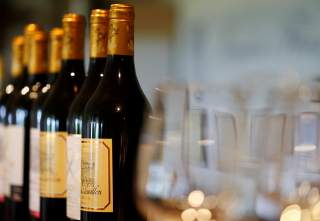The Next Target in Donald Trump's Trade War: French Wine?
The trade war continues with no end in sight.
French wine has been the subject of an ongoing trade dispute between the United States and the European Union, and it’s one that doesn’t show signs of cooling off. In November 2018 President Donald Trump threatened to increase US tariffs on French wine, and in July he repeated the threat, this time in response to France’s proposed “GAFA tax”.
In Trump’s November 2018 tweet, he stated, “On Trade, France makes excellent wine, but so does the US” This is reminiscent of what US president Thomas Jefferson wrote in a 1808 letter: “We could, in the United States, make as great a variety of wines as are made in Europe, not exactly of the same kinds, but doubtless as good.” Trump and Jefferson differ in their tone, but both suggest that the US and France both make excellent wines, and that there may be a role for the US government in boosting the domestic industry. Whether tariffs are the way to do it is a separate question, however, and deserves analysis.
Taxes, but not the same ones
Wine leads the way when it comes to agricultural trade between the United States and the European Union. In 2018, EU wine exports to the US totaled 5.6 billion euros, nearly 27% of total imports for the sector.
While the European Union and United States both apply significant tariffs on wine imports, they’re fundamentally different: EU rates are higher for bottled products and sparkling wines, while the US tariffs are higher for bulk wines. Trade in wine is also affected by “nontariff barriers”, a range of domestic support measures and regulations in both regions. The EU has had a long history of supporting wine grape production, which is heavily regulated. In the US, state-level regulations govern the sale and distribution of wine, ultimately increasing costs to EU exporters.
Published tariff rates remind us that European tariffs are higher on commercial premium (low-value bottled products), super premium (high-value bottled products), and sparkling wines, yet it is the opposite when it comes to bulk wine where average US tariffs are higher than the ones applied by the EU.
While it is true that tariffs on bottled wine imported in the United States are lower than tariffs on bottled wine imported in France, it is important to remember that French tariffs are decided by the European Union, not France. Moreover, the tariffs are applied in the same way to all non-EU countries that belong to the WTO – the United States, certainly, but all other WTO members as well. These tariffs are the result of the EU complying with the WTO rules agreed to in 1995 to reduce agricultural tariffs by at least 15% and on average by 36% from tariffs pre-1995.
Winners and losers
Any change in tariffs between the United States and the EU has the capacity to affect trade and will lead to changes in welfare among stakeholders in this sector. Increasing US tariffs on French wines will also increase them on wines from Spain, Portugal, Italy, and Germany. Ultimately this will increase the cost to import wines into the United States and this added cost will fall on European exporters, US importers, and US consumers, while the US government will collect additional tariff revenue.
Our 2018 research examined how changes in US and European tariffs and domestic regulations would affect the key stakeholders in the wine industry. Results suggest that modest increases in US tariffs would increase profits for US wine producers and impose costs on US wine consumers, with a net decrease in US welfare. Overall, however, it would not have a substantial effect in the US market in the short run.
The China connection
The United States isn’t the only customer for EU wine producers, of course, and Trump’s threats of tariffs could have unintended consequences in global market – particularly in the context of the ongoing trade disputes with China.
In response to US tariffs on steel and other products, China has imposed three rounds of duties on American wine, and the effective rate is now close to 100%. The Chinese wine market is currently not a major one for US exporters, but it could be given the rising interest in wine among Chinese consumers. Currently, the lion’s share of the country’s imports are from Europe, and in particular France. So as US wine becomes more expensive in China thanks to Chinese tariffs, demand for French wines could grow.
Higher US tariffs applied to European wines may thus give EU producers additional incentive to develop their brands in the expanding Chinese market. Although the direct effects of higher US tariffs on EU wines might be negligible in the United States, the indirect effect of losing out in wine market in China could have much bigger consequences for US producers in the long run.
Florine Livat is an Associate Professor of Economics at the Kedge Business School.
Bradly Rickard is an Associate Professor of Applied Economics and Management at Cornell University.
This article originally appeared at The Conversation.

